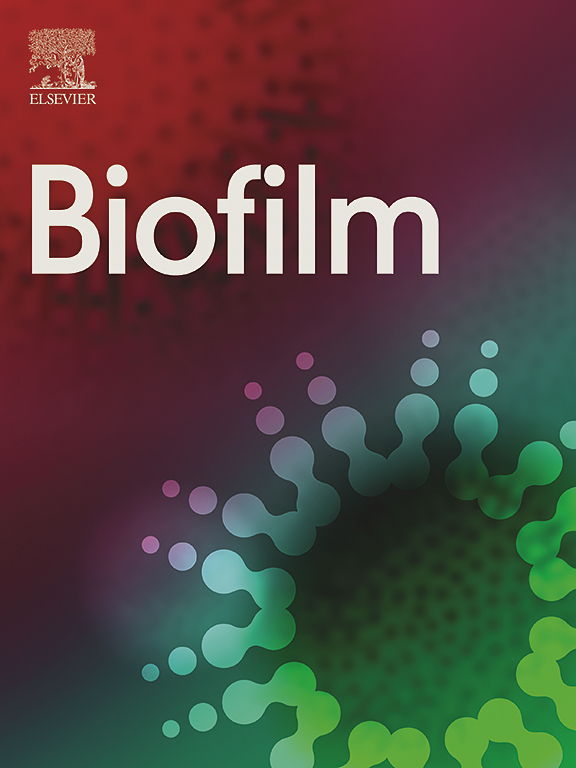lncRNA ADAMTS9-AS2/let-7a-5p轴通过靶向口腔黏膜下纤维化相关口腔鳞状细胞癌中的HK2调控代谢重编程
IF 9.4
2区 医学
Q1 BIOCHEMISTRY & MOLECULAR BIOLOGY
引用次数: 0
摘要
口腔粘膜下纤维化背景的口腔鳞状细胞癌(OSCC-OSF)具有独特的病因,在临床上与其他oscc不同。我们之前通过调节PI3K-AKT信号,发现ADAMTS9-AS2在OSCC-OSF中是一种功能性肿瘤抑制因子。然而,其在代谢调节中的作用及其潜在机制尚不清楚。在本研究中,我们首次报道了ADAMTS9-AS2通过与let-7a-5p协同抑制OSCC细胞的有氧糖酵解。从机制上讲,let-7a-5p通过靶向HK2的3 ' -UTR抑制HK2的表达,进一步解除糖酵解功能,而增强HK2的表达则恢复了ADAMTS9-AS2/let-7a-5p轴对有氧糖酵解和OSCC细胞生长的抑制作用。外泌体ADAMTS9-AS2调节OSCC肿瘤发生过程中的代谢重编程。脂质和嘧啶代谢通路中ABC转运蛋白显著富集。在ADAMTS9-AS2外泌体处理后,几种关键代谢物发生了变化,包括dl -谷氨酸和d -甘露糖水平升高,胞苷和d -麦芽糖水平降低。因此,我们的研究结果表明,ADAMTS9-AS2驱动let-7a-5p与HK2结合,通过消除有氧糖酵解来抑制OSCC中的细胞生长。我们关于代谢重编程的数据极大地扩展了ADAMTS9-AS2/let-7a-5p轴在OSCC肿瘤发生过程中作为代谢关键调节因子的作用。本文章由计算机程序翻译,如有差异,请以英文原文为准。
lncRNA ADAMTS9-AS2/let-7a-5p axis regulates metabolic reprogramming by targeting HK2 in oral submucous fibrosis-associated oral squamous cell carcinoma
Oral squamous cell carcinoma in the background of/with oral submucous fibrosis (OSCC-OSF) has a unique etiology and is clinically distinct from other OSCCs. We previously identified ADAMTS9-AS2 as a functional tumor suppressor in OSCC-OSF through the regulation of PI3K-AKT signaling. However, its role in metabolic modulation and the underlying mechanisms remain unclear. In this study, we reported for the first time that ADAMTS9-AS2 suppressed aerobic glycolysis by cooperating with let-7a-5p in OSCC cells. Mechanistically, let-7a-5p inhibited HK2 expression by targeting its 3′-UTR, further deregulating glycolytic function, while enhancing HK2 expression rescued the inhibitory effects of the ADAMTS9-AS2/let-7a-5p axis on aerobic glycolysis and OSCC cell growth. Exosomal ADAMTS9-AS2 regulated metabolic reprogramming during OSCC tumorigenesis. ABC transporters in lipid and pyrimidine metabolism were significantly enriched pathways. Changes in several key metabolites were identified after ADAMTS9-AS2 exosome treatment, including increased levels of DL-glutamic acid and D-mannose, along with decreased levels of cytidine and D-maltose. Thus, our findings demonstrate that ADAMTS9-AS2 drives let-7a-5p binding to HK2 to suppress cell growth in OSCC by abolishing aerobic glycolysis. Our data on metabolic reprogramming have greatly expanded the role of the ADAMTS9-AS2/let-7a-5p axis as a key regulator of metabolism during OSCC tumorigenesis.
求助全文
通过发布文献求助,成功后即可免费获取论文全文。
去求助
来源期刊

Genes & Diseases
Multiple-
CiteScore
7.30
自引率
0.00%
发文量
347
审稿时长
49 days
期刊介绍:
Genes & Diseases is an international journal for molecular and translational medicine. The journal primarily focuses on publishing investigations on the molecular bases and experimental therapeutics of human diseases. Publication formats include full length research article, review article, short communication, correspondence, perspectives, commentary, views on news, and research watch.
Aims and Scopes
Genes & Diseases publishes rigorously peer-reviewed and high quality original articles and authoritative reviews that focus on the molecular bases of human diseases. Emphasis will be placed on hypothesis-driven, mechanistic studies relevant to pathogenesis and/or experimental therapeutics of human diseases. The journal has worldwide authorship, and a broad scope in basic and translational biomedical research of molecular biology, molecular genetics, and cell biology, including but not limited to cell proliferation and apoptosis, signal transduction, stem cell biology, developmental biology, gene regulation and epigenetics, cancer biology, immunity and infection, neuroscience, disease-specific animal models, gene and cell-based therapies, and regenerative medicine.
 求助内容:
求助内容: 应助结果提醒方式:
应助结果提醒方式:


